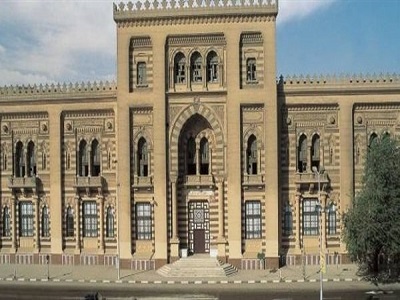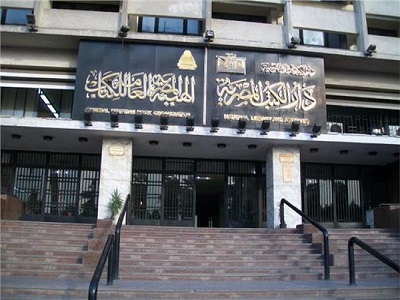Landmarks
Al-Azhar Mosque
It was
founded by Jawhar al-Siqilly, in the Fatimid conqueror of Egypt, in 361 Ah- 972
Ad to be a mosque and university and it was and still a true marvel and a
not-to-be-missed attraction while visiting Cairo. It was named Al-Azhar after
Fatimah Al-Zahra (daughter of the Islamic prophet Muhammad) and it is the first
of the Fatimid Cairo's mosques. The middle area of the mosque is rich with the
most gorgeous Islamic monuments that return to the tenth century and
afterwards.
More
Al-Azhar Mosque Museum on Google Maps
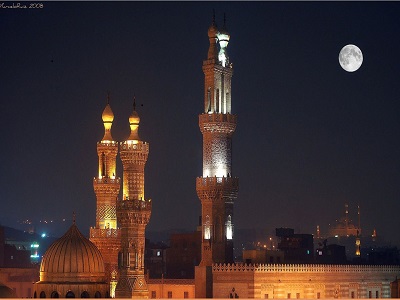
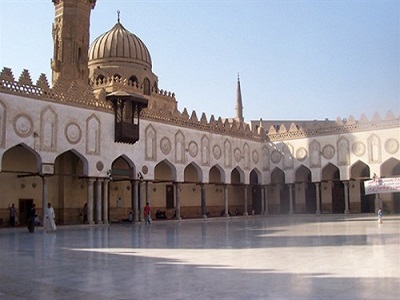
Ibn Tulun Mosque
Ibn Tulun
Mosque is located in Ibn Tulun Square near to Al sayd Zayneb Mosque. It is
about six and a half acres. It was built by Ahmed Ibn Tulun, the founder of the
Tulunid dynasty that ruled Egypt, 265 AH- 879 AD. It is one of the oldest
mosques in Egypt as it is the third mosque built in Egypt.
Ibn Tulun Mosque on Google Maps
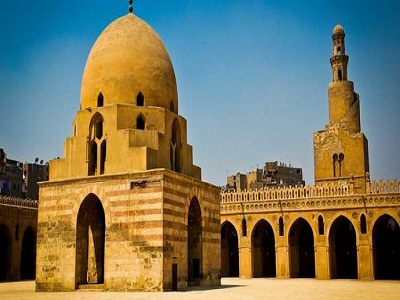
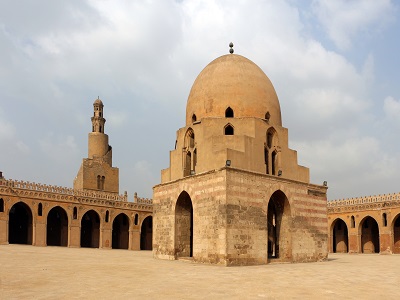
Mosque of Al-SalihTala'i
This mosque
was built by Al-Salih Tala'i 555 AH -1160 AD. Also known as the "hanging
mosque" as it is located above street level. It is the "most recently"
built Fatimid mosque in Cairo. Located near Bab Zuweila, it boasts beautiful
Kufic Koranic inscriptions on it walls and pillars. Under it, there are shops
which pay for the mosque’s financial needs.
Mosque of Al-SalihTala'i on Google Maps
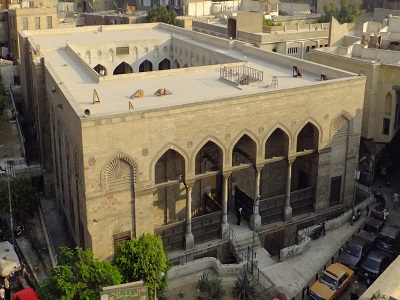
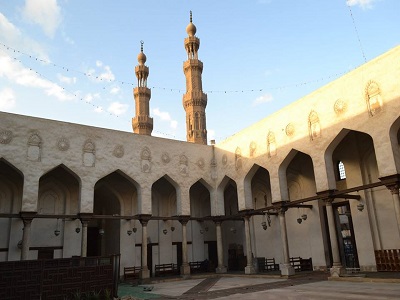
Abu Al-Dahab Mosque
This mosque
was built in 1774 AD- 1188 AH towards Al-Azhar mosque upon the Amir Mohamed Beh
Abu El Dahab request, one of the leaders of Egypt during the rule of the
Ottoman Empire. The mosque is a combination of the Ottoman and Mamluk styles.
The mosque of Abu Dahab is considered a hanging mosque as it was built above
the street level.
Abu Al-Dahab Mosque on Google Maps
Al-Rifa'i Mosque
Al-Rifa'i
Mosque is one of Cairo's largest mosques. It took 43 year. It is Located in
"Midan Al-Qalaa" or the Citadel Square. It was built by Khushyar
Hanim mother of Ismail Pasha 1286 AH- 1869 AD. This Mosque is the resting place
of many members of the Egyptian Royal Family, including the last king, King
Farouk.
Al-Rifa'i Mosque on Google Maps
More
The Mosque and School of Al Sultan Hassan
The mosque
and the school of Sultan Hassan are located at Salah al-Din Square inside the
Citadel. It was built between 1356 and 1363 by Sultan Hassan who was killed
before finishing the construction of the mosque. The mosque- madrasa (school)
is considered one of the most outstanding and important Islamic buildings that
represents the architectural arts of the early of the mamluk era which was
marked by its architectural splendor.
The Mosque and School of Al Sultan Hassan on Google Maps
More
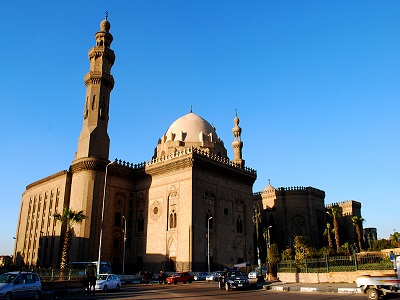
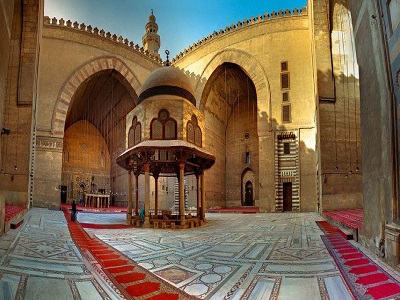
Al-Amir Shaykhu al-'Umari Mosque and Khanqah
The mosque
was built in 1349, five years later by the Khanqah in Sulaiba Street. It was
built by Al-Amir Shaykhu al-'Umari. The interior of the mosque is quite
beautiful with decorations of black glass, wood and marble, as well as a stone
Minbar which is rather unusual. The beamed ceiling of the Khanqah along with
the blue and white tiling creates a magnificent effect, which is further
enhanced by the lovely Koranic inscriptions.
Al-Amir Shaykhu al-'Umari Mosque and Khanqah on Google Maps
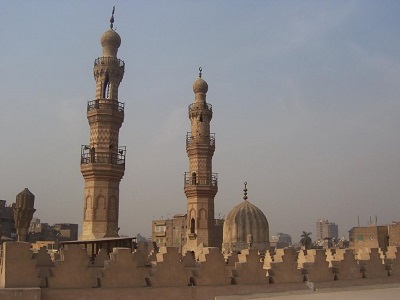
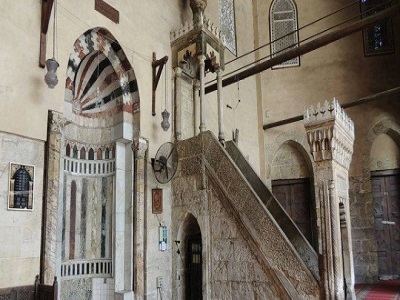
The Blue Mosque
The Blue
Mosque (The Aqsunker Mosque) was built in 1347 and it is located in Old Cairo. It
boasts a beautiful bluish marble on its outer walls, and inside is flowery
tiling in Ottoman fashion in blue, giving the mosque its name; these tiles were
added during a 1652 restoration. The Blue Mosque is remarkably close to where
the Salah El-Din’s city walls were recently found and across the street from
Al-Azhar Park.
The Blue Mosque on Google Maps
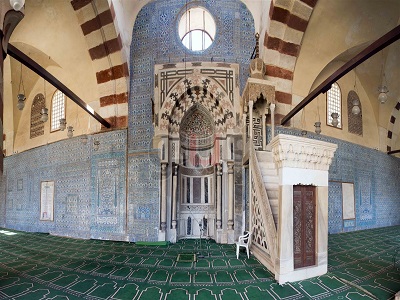
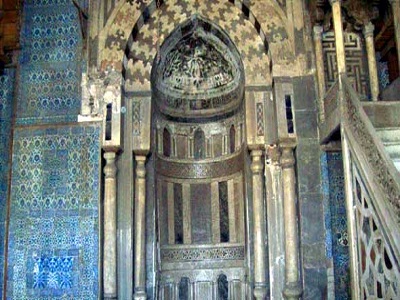
Amir Sarghitmish Madrassa and Mausoleum
This small institution is located right next
to the Mosque of Ibn Tulun on Al-Saliba Street in Cairo. It was built in 1356
and functioned as a madrassa, a mosque, an orphanage, and a mausoleum once Amir
Sarghitmish passed away. Many of the teachers at this madrassa came from
Persia, hence the use of Persian styles in the architecture and interior
elements.
Amir Sarghitmish Madrassa and Mausoleum on Google Maps
Beyt Zeinab Al-Khatoun
This
house was built in 873 Ah- 1420 Ad and it is located behind Al-Azhar Mosque. It
is a breathtaking example of Islamic Cairo. This is a house marked by women –
from its elite 19th century female owner after which it is named, to the girls'
vocational school that operated there in the 1980’s, to its recent reopening
after renovation by Suzanne Mubarak.
Beyt Zeinab Al-Khatoun on Google Maps
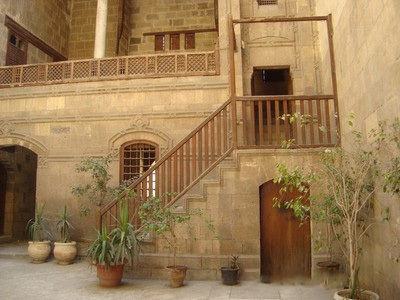
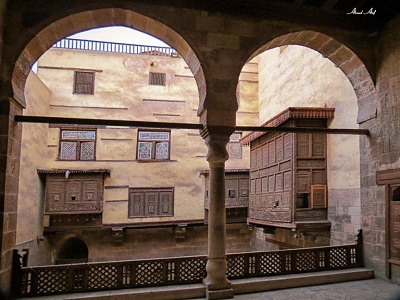
It is
located behind Al-Azhar Mosque and was built in 1141 AH - 1731 AD. During the
90's the house was renovated through joint French-Egyptian efforts. The House
is distinct by its colorful and golden ornament carved ceilings and it is
example of the Ottoman houses. Beyt Al-Harrawi is also all about music. So much
so that it also goes by the moniker Beyt Al-Oud (house of the lute).
Beyt Al-Harrawi on Google Maps
Magra Al-Oyoun Aqueduct
Salah
El-Din Al Ayoubi wanted to provide the citadel (the place of most Egypt’s
rulers) with fresh water so he built sour Magra Al-Oyoun that extended from
Al-Fustat to the citadel but a small part only remains. It is known that
Al-Nassir Muhammad ibn Qalawoon built four wheels of water to connect
the water of the Nile to Salah El-Din Citadel.
Magra Al-Oyoun Aqueduct on Google Maps
More
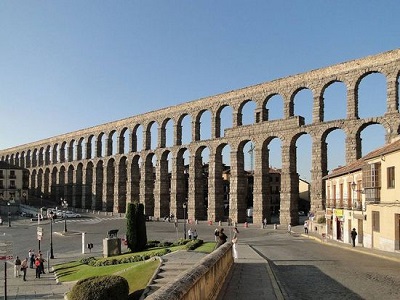
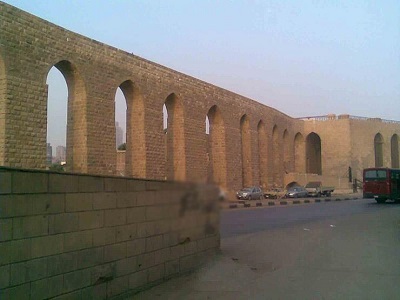
Virgin Mary's Tree
The
Tree of the Virgin Mary is located in Al-Balsam Street in Al-Matareya near
Senusert obelisk. The tree is considered as a holy tree because there the Holy
Family were said to have found shelter beneath the shade of a sycamore tree.
The trunk of the tree is also said to have opened its bark miraculously to
protect them when brigands pursued them. A miraculous spring of water gushed
nearby for the child to drink and in its pool, a healing Balsam plant grows
until this day.
Virgin Mary's Tree on Google Maps
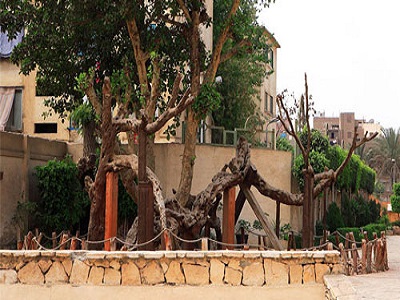
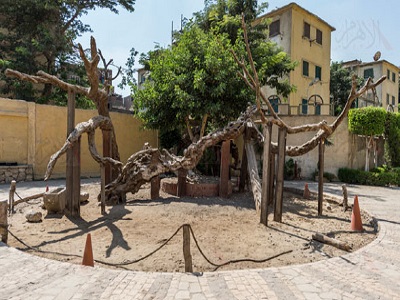
Prince Taz Palace
Amir Taz
Palace, also known as Dar Taz meaning the home of Taz is one of the most
well-known Mamluk Palaces remaining in historic Cairo. In the 19th century, it
became a girl's school, and has then been used as a storage depot by the
Ministry of Education. Recently, the palace has undergone major renovations,
and is now open for touristic visits in the morning, with a new area that
includes exhibitions of the palace's property. At night, the palace hosts an
Egyptian television show called Al-Kasr.
Prince Taz Palace on Google Maps
More
Mostafa Kamel Museum
Mustafa
Kamel Museum is located at Salah El-Din Square, inside the castle of Salah
Aldin. The museum was used as a shrine containing the remains of the two
leaders, who are Mustafa Kamel and Mohamed Farid. The museum was officially
opened in April 1956. The museum contains two large halls that contain many
collections of Mustafa Kamel, the most important of which are books and
speeches by Mostafa Kamel in his handwriting and some pictures of his friends
and relatives.
Mostafa Kamel Museum on Google Maps
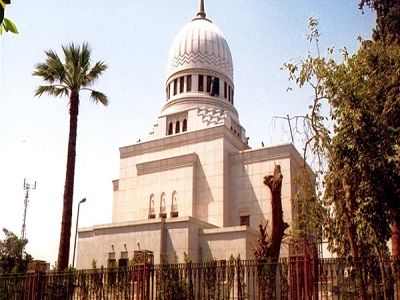
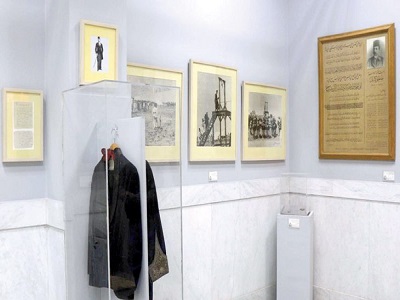
Nilo meter
It is
one of oldest civilian buildings in Egypt. It is located on the lower end of
Rhoda Island, in Cairo; the Nilometer was used to measure the level of the
river in times past. It was built in 861 AD – 247 AH by the Muslim Caliph
Al-Mutawakkil, it is crowned by an interesting pointed dome that was
reconstructed after being destroyed by French invaders.
Nilo meter on Google Maps
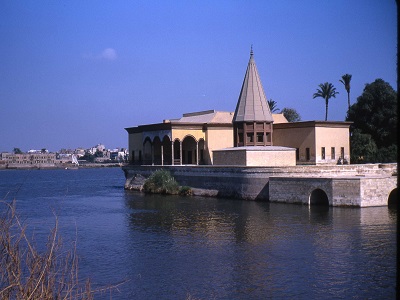
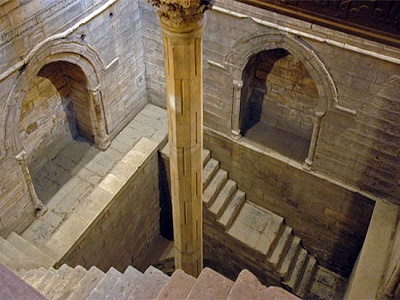
Cairo Tower
The
Cairo Tower is located in the center of the capital on Zamalek Island on the
Nile. The tower was designed by the Egyptian architect, Naoum Chebib. It was
built in the form of the Pharaonic lotus symbol of their civilization. You will
also find a restaurant at the top of the tower. Occasionally, the restaurant
revolves around the tower's main axis.
Cairo Tower on Google Maps
More
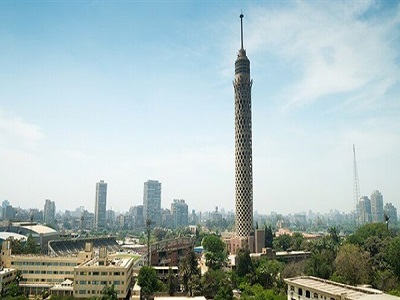
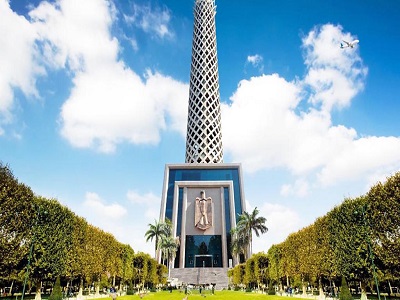
6th of October Panorama
The
6th of October Panorama is located in Salah Salem Street in front of El Obour Buildings.
This is the October War Panorama which is a unique cultural, artistic and
architectural achievement. Moreover, it is a major tourist attraction. The
Panorama has been set up to immortalize Egypt’s triumphant war of October 1973.
6th of October Panorama on Google Maps
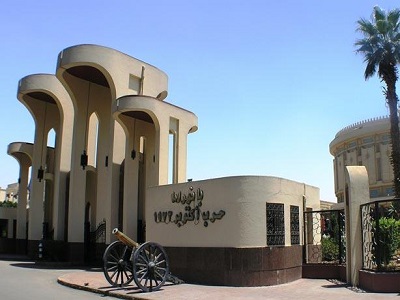
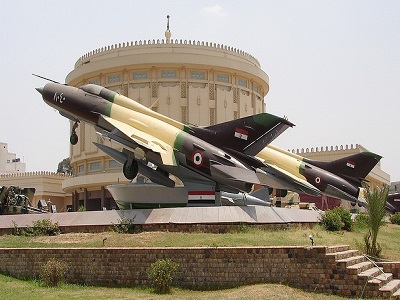
Cairo
Opera House is Located on the upscale island of Zamalek. It was established in
1988 with the inauguration of the new Cairo Opera House. Its goal is to promote
the arts of music and dance and to preserve and renew traditional Arab music.
In order to be more than just a place where music and art are performed the
National Cultural Centre wants to give space to learning and inspiration, to the
exchange of ideas, the respect of a common cultural heritage, and a shared
passion for the arts.
Cairo Opera House on Google Maps
More
Unknown Soldier memorial
The
Memorial of the Unknown Soldier is located in Nasr City. It was made in the
wake of October War in 1973 to memorize the sacrifices of the brave Egyptian
soldiers. In the first anniversary of October War, late President Sadat issued
directives to make a memorial to the martyrs of the war and to memorize the
Unknown Soldier.
Unknown Soldier memorial on Google Maps
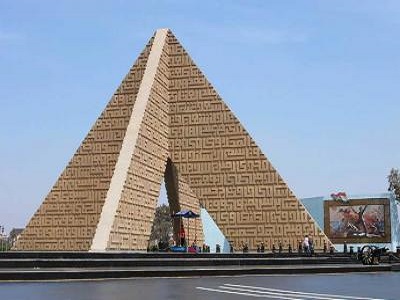
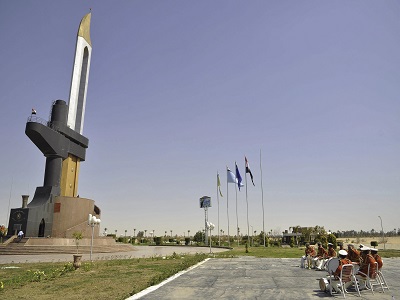
Egyptian National Library and Archives
The
National Library and Archives was established by a decree from Khedive Ismail
in 1286 AH- 1870 AD on an initiative from Ali Pasha Mubarak. The library was
established for the purpose of "collecting the valuable and precious
manuscripts held back by the Sultans, Princes, Scholars, and authors from the
Mosques, Shrines, and Institutions of Learning.
Egyptian National Library and Archives on Google Maps
